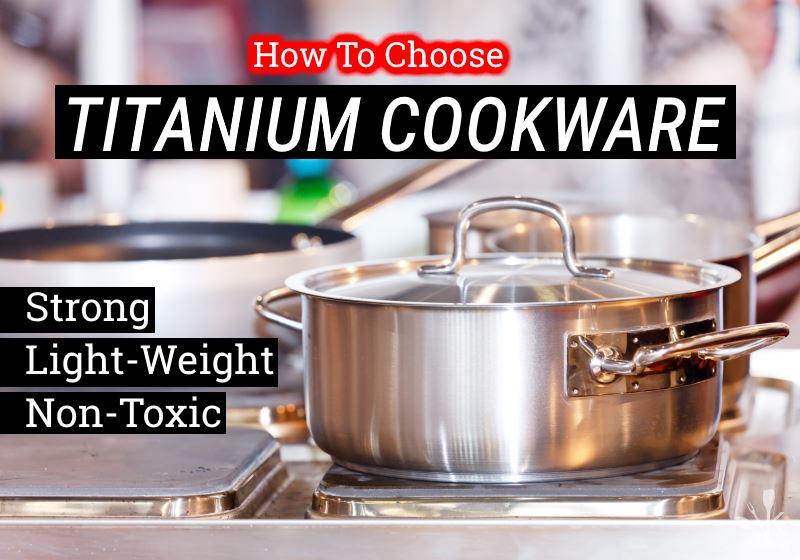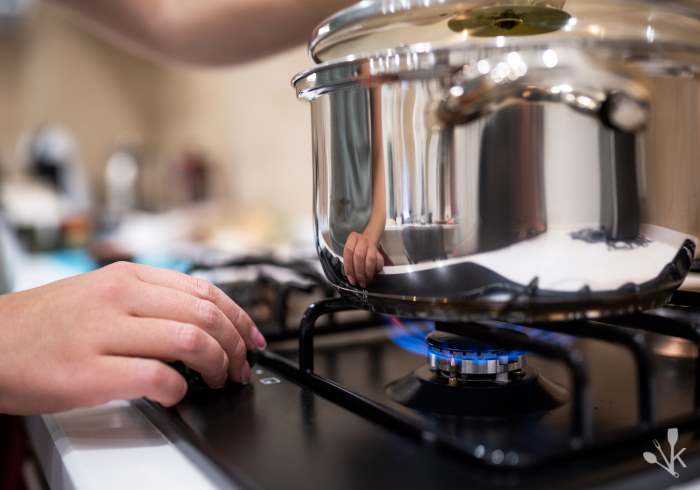In this guide, I will teach you how to clean your ceramic pans with vinegar.
However, should you find yourself facing a stain that forces you to decide between removing the stain or damaging the pan, you’ll need to learn to live with the stain.

How To Clean Ceramic Pans
The acidity in vinegar breaks down grease on its own. In addition, when used in combination with baking soda, it will cause extreme foaming and bubbling, oxygenating stains and releasing food from the surface of your ceramic cookware.
Time To Complete: 25mins
What You Need
- Dirty ceramic pan
- White vinegar
- Water
- Baking soda
- Cheesecloth or soft sponge like Magic Eraser
Instructions
- Start with a baking soda paste. Sprinkle it thick on the stain and then make a paste with water.
- Set the pan in the sink, stain side up, and apply vinegar via spray bottle. The result will be intense foaming, which is why you don’t want to be holding the pan while you spray the vinegar.
- Let the vinegar bubble away, and then scrub gently with a soft sponge. If you need more abrasion, wad up some cheesecloth for a gentle scrubbing pad.
- Once the stains are removed, gently clean the pan with warm water and dry.
Both the pale interior and the colorful exterior can become dingy and stained, however, so a regular cleaning regimen to remove burned on food particles is critical to keeping your ceramic cookware bright.
What you burned matters. Cleaning up onions is a challenge, but carbohydrates like rice may become one with the pot, particularly if you’re using a heavy cast iron ceramic lined lasagna pan as opposed to a nonstick ceramic pan like Greenlife Pans.
If you damage the lining of your ceramic pan, food will stick and you may begin to see corrosion. If you’ve already damaged your ceramic pan, see our top picks of the best ceramic cookware.
Cleaning Ceramic Pans With Other Methods
Using Baking Soda
Baking soda is an excellent abrasive on its own. It will also foam up when combined with soap, water, or vinegar. This foaming action breaks up stubborn stains and breaks down grease.
Sprinkle a thick layer of baking soda over the stain. Add a little dish soap to the powder to form a paste. Work the paste over the stain with a soft sponge or cloth.
You shouldn’t need to apply a lot of pressure because the abrasive nature of the soda will take up tiny particles of food and grease.
Using Hydrogen Peroxide
Hydrogen peroxide poured on a stain will foam up inside your ceramic cookware when it comes in contact with burned on food.
There are 3 important items to consider when using hydrogen peroxide:
- Hydrogen peroxide has a shelf life. If you add it to the pot and it doesn’t bubble, you need new peroxide.
- Only work on cold pots with this product, and don’t heat it up once it’s in the pot.
- Rinse your pan very well after cleaning with this method.
Final Thoughts
In our guide Teflon vs Ceramic guide we determined that ceramic nonstick cookware is a safe alternative to Teflon.
Ceramic cast-iron is a great alternative if you enjoy the heat and heft of cast iron cookware but don’t want to fiddle around seasoning these products.
In addition, these products are available in a wide array of colors. Investing in the right products for cleaning burnt ceramic pans will make it easy to keep your beautiful ceramic cookware looking sharp.
Related | Benefits Of Ceramic Cookware











